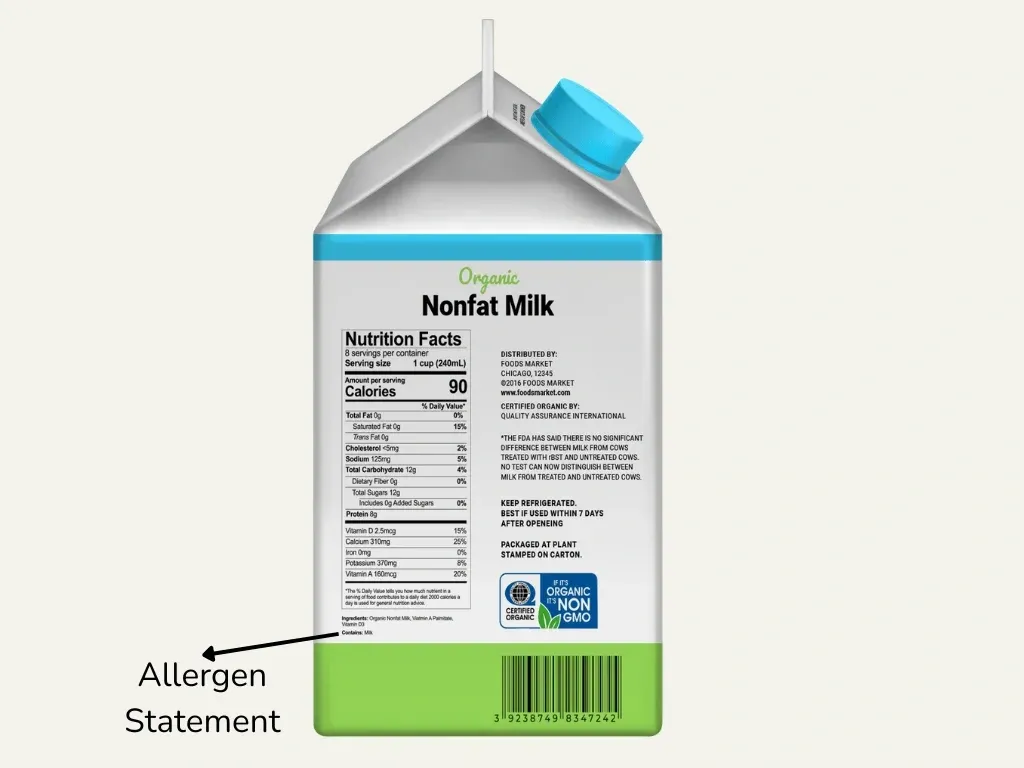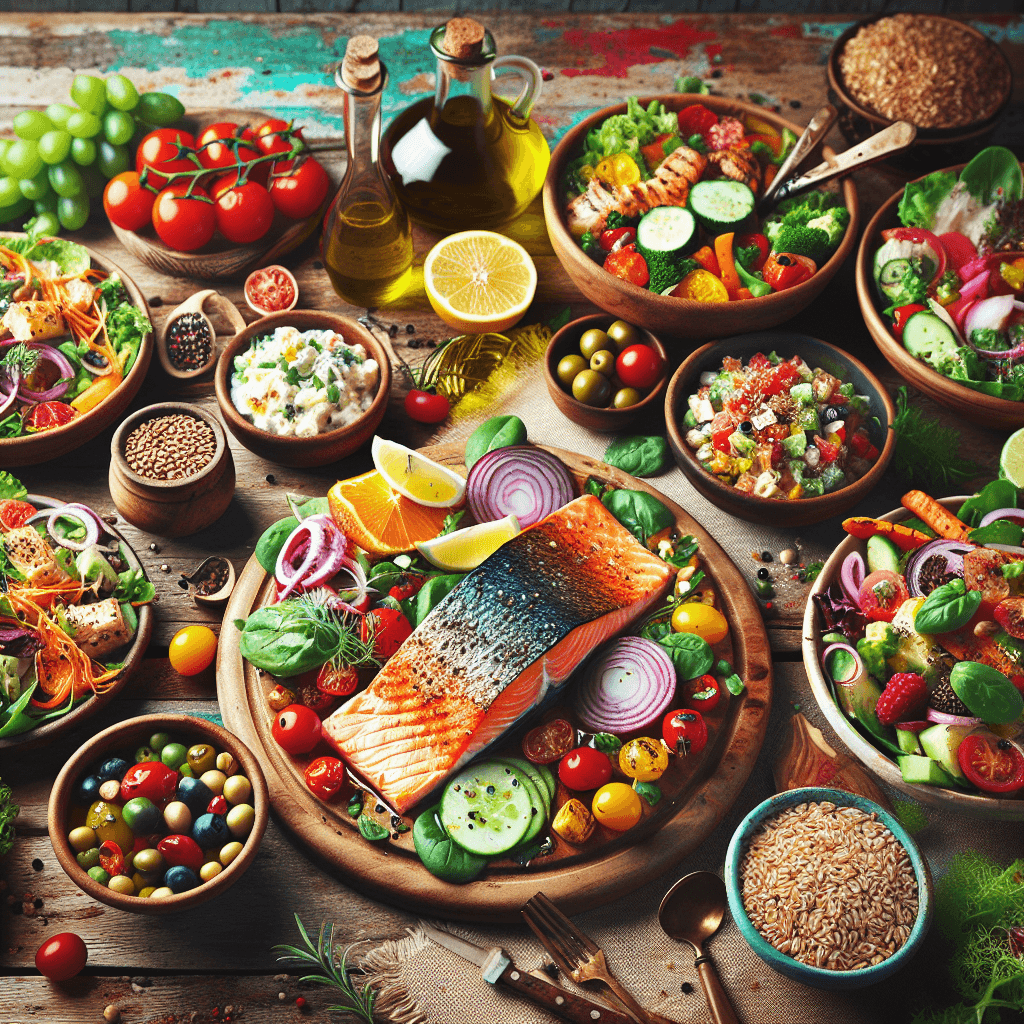Discover the best sugar-free hard candy for diabetics—delicious, safe, and allergy-friendly treats to enjoy in 2025. Find your new favorite today!
Sugar in Drinks: New Diabetes Risks and Safer Choices for 2025 Families
Discover how sugar in drinks may increase diabetes risk more than sugar in food. Learn the latest research and empower safer, smarter choices for your family.
How to Scan Food for Allergens: 2025 Food Safety Tips & Allergy-Safe Shopping
Scan your food for allergens with smart tech! Stay safe and confident with 2025’s top food safety trends and allergy-aware shopping tips.
6 Things to Avoid After 5 P.M. for Better Blood Sugar Control, According to Dietitians – EatingWell
Discover 6 things to avoid after 5 p.m. for better blood sugar control, according to dietitians. Improve your evening habits for healthier glucose levels!
What’s Hot in Drinks: Inside the Rise of Sugar-Free, Plant-Based, and Functional Beverages – Food & Beverage Magazine
Discover the hottest trends in drinks! Explore the rise of sugar-free, plant-based, and functional beverages shaping the future of the industry.
How to Spot Hidden Food Allergens: A Life-Saving Label Guide
How to Spot Hidden Food Allergens: A Life-Saving Label Guide Did you know that just eight common food allergens cause 90% of food allergies and serious allergic reactions in the U.S.? These everyday ingredients can trigger reactions within minutes – from mild hives to life-threatening anaphylaxis. Reading labels becomes a vital safety practice if you have food allergies. The FDA requires clear labeling of the “Big 9” major food allergens: milk, eggs, fish, crustacean shellfish, tree nuts, peanuts, wheat, soybeans, and sesame (added recently). Yet concerns remain. Scientists have identified more than 160 foods that can trigger allergic reactions in sensitive people. Many products contain hidden allergens that aren’t obvious on the packaging. The FDA’s data shows that undeclared allergens caused about one-third of reported serious health risks, with milk leading food recalls. The risk extends beyond food labels. Products not regulated by the FDA, such as cosmetics and personal care items, can contain allergens too. This makes watchfulness essential. Apps like Yuka and Food Scan Genius help identify potential allergens faster. This detailed piece shows you how to spot hidden food allergens, understand confusing label terms, and keep yourself and your loved ones safe from dangerous allergic reactions. Why Reading Food Labels Can Save Your Life More than 15 million Americans with food allergies know that reading labels isn’t just helpful—it could save their lives [1]. Your body’s encounter with an allergen can trigger reactions ranging from uncomfortable to deadly within minutes. Why Reading Food Labels Can Save Your Life A quick check of ingredients before eating could mean the difference between safety and rushing to the emergency room. April Clark, a registered dietitian at the Food Allergy Center, emphasizes that “reading and understanding food labels is one of the most important things parents of children with food allergies can do” [1]. How food allergens trigger reactions Your immune system mistakenly flags specific food proteins as harmful during an allergic reaction. Your body creates immunoglobulin E (IgE) antibodies that recognize that specific allergen [2]. Even a tiny amount of that food triggers these antibodies to alert your immune system, which releases histamine and other chemicals into your bloodstream [2]. These chemicals cause allergic reaction symptoms. Your body might react in several ways: Skin reactions: Hives, flushed skin, or rash [3] Digestive issues: Vomiting, diarrhea, and abdominal cramps [3] Respiratory problems: Coughing, wheezing, or difficulty breathing [3] Cardiovascular symptoms: Dizziness, weak pulse, or loss of consciousness [4] Anaphylaxis poses the biggest threat—a severe reaction that can stop breathing and shock your body [4]. Most symptoms show up within two hours of eating, often just minutes after [4]. Scientists haven’t found a cure for food allergies yet [3]. Your best defense lies in avoiding trigger foods completely, which makes reading labels crucial. The rise of hidden allergens in packaged foods Hidden allergens sneak up in unexpected places. Experts warn that these ingredients might “be listed under a different name that you might not be expecting” [5]. To name just one example, “natural flavoring” or “spices” sometimes hide allergens without naming them specifically. Manufacturing practices create extra risks. Food ingredients follow commodity pricing, and manufacturers often use different recipes for the same product [1]. Companies sometimes swap expensive ingredients for cheaper alternatives—which could contain allergens [1]. Changes happen without warning. “Allergens in prepared foods can change over time. Manufacturers may change the ingredients or production methods of their products without notifying consumers,” says Dr. Daines [5]. Experts suggest reading labels every time—even for products you trust. Product sizes bring unexpected dangers. Clark warns parents about checking labels for each size: “‘Fun-sized’ candy and snacks often have different ingredients, which could expose your child to an unexpected allergen” [1]. Cross-contamination adds another layer of risk. Foods without listed allergens might still be dangerous if they’re made in facilities that handle allergenic ingredients [1]. Companies choose whether to include warnings like “may contain” or “processed in a facility that also processes”—these statements remain optional [6]. No rules control these warnings—neither their inclusion nor their wording [7]. Allergens beyond the main nine (milk, eggs, fish, crustacean shellfish, tree nuts, peanuts, wheat, soybeans, and sesame) might lurk unlisted in spices or flavorings [7]. Technology helps tackle these challenges. Apps like Yuka and Food Scan Genius help spot potential allergens in packaged foods quickly. These tools scan barcodes and highlight concerning ingredients, adding extra safety beyond manual checks. People with severe allergies need more than digital tools. Clark recommends asking manufacturers directly about their cross-contamination prevention measures. “If manufacturers have processes in place to prevent cross contamination, they are usually happy to share those processes with you” [1]. Understanding the Big 9 Allergens Image Source: Association for Child Development The FDA has identified specific foods that commonly trigger allergic reactions. More than 160 foods can cause these reactions, but nine foods are responsible for most serious cases in the United States [8]. You need to understand these major allergens if you have food sensitivities or care for someone with allergies. What are the major food allergens identified by the FDA? The FDA now recognizes nine major food allergens: milk, eggs, fish, crustacean shellfish, tree nuts, peanuts, wheat, soybeans, and sesame [9]. These foods cause about 90% of food allergic reactions in America [10]. This “major food allergen” label carries legal weight. Federal regulations require manufacturers to clearly label these ingredients on food packaging [3]. Labels must show the allergen in parentheses after the ingredient name (like “lecithin (soy)”) or list it in a separate “Contains” statement right after the ingredients [3]. Apps like Yuka or Food Scan Genius help people spot these major allergens while shopping. These digital tools scan product barcodes and alert you about allergens, adding an extra safety layer beyond reading labels manually. Differences between Big 8 and Big 9 allergens The official list had only eight major allergens from 2004 to 2021, known as the “Big 8” [11]. The Food Allergen Labeling and Consumer Protection Act of 2004 (FALCPA) first required manufacturers
7-Day Mediterranean Diet Meal Plan for Better Blood Sugar, Created by a Dietitian – EatingWell
Discover a 7-Day Mediterranean Diet Meal Plan designed by a dietitian to help balance blood sugar and boost health. Simple, delicious, and effective.
Pueblo policy could change default sugary drink in kids’ meals – MSN
Pueblo considers a new policy to make healthier drinks the default in kids’ meals, aiming to reduce sugary drink consumption and improve child health.
Innovations in Fat, Sugar, and Salt Reduction to be Explored in IFT Webinar and at IFT FIRST – 01net
Innovations in Fat, Sugar, and Salt Reduction: Key Insights from the IFT Webinar and FIRST Event The food industry is undergoing a transformative shift toward healthier formulations, with innovations in fat, sugar, and salt reduction taking center stage. On [Date], the Institute of Food Technologists (IFT) hosted a webinar and showcased advancements at the IFT FIRST event, highlighting cutting-edge approaches to reformulating everyday foods. According to 01net, these innovations promise to enhance taste, texture, and consumer acceptance while promoting better nutrition. From advanced emulsification technologies to novel salt substitutes and sugar alternatives, the webinar and FIRST exhibition illustrated how research is driving fat, sugar, and salt reduction across product lines. Consumers are increasingly seeking foods that align with health guidelines without sacrificing flavor. Tools like Food Scan Genius are empowering shoppers to scan barcodes in real time, revealing fat, sugar, and salt content instantly and guiding smarter choices on the go. In this comprehensive blog post, we’ll explore: Key Takeaways Emerging technologies in fat, sugar, and salt reduction are reshaping food product development. Scientific rationale supports the health benefits of lower fat, sugar, and salt formulations. Individuals with dietary restrictions can leverage new ingredients and tools like Food Scan Genius for better choices. Practical strategies help consumers manage intake without compromising taste. Ongoing research and collaborations are accelerating sustainable, healthy food solutions. Background on Fat, Sugar, and Salt Reduction in the Food Industry The push for fat, sugar, and salt reduction is driven by global health concerns. Excessive intake of these nutrients is linked to obesity, cardiovascular disease, hypertension, and type 2 diabetes. Public health bodies like the World Health Organization and the U.S. Food and Drug Administration have recommended gradual reductions in added sugars, saturated fats, and sodium in processed foods. Food manufacturers face the challenge of reformulating beloved products without sacrificing sensory attributes. Innovations showcased at IFT included: Microencapsulation techniques to deliver mouthfeel with less fat. High-intensity sweeteners blended with natural extracts for balanced sweetness. Mineral-rich salt substitutes that maintain salty taste with lower sodium content. These approaches exemplify how science-driven fat, sugar, and salt reduction can meet both industry objectives and consumer demands for healthier options. Medical and Scientific Explanation of Fat, Sugar, and Salt Reduction From a medical perspective, lowering intake of fat, sugar, and salt can significantly reduce disease risk. Saturated fats raise LDL cholesterol, a key factor in coronary artery disease. Excess sugar contributes to weight gain and insulin resistance. High sodium diets increase blood pressure and stroke risk. Research indicates that a 10% reduction in average population sodium intake could prevent up to 2.5 million deaths from cardiovascular events worldwide annually (CDC: Sodium and Health). Key mechanisms underpinning fat, sugar, and salt reduction include: Ingredient substitution: replacing saturated fats with unsaturated oils or fat mimetics. Polyol and alternative sweetener integration to reduce caloric sugar without bitterness. Use of potassium chloride and flavor-enhancing botanicals to lower sodium chloride content. Ongoing clinical trials funded by the National Institutes of Health are evaluating long-term outcomes of reformulated products on blood pressure, lipid profiles, and glycemic control. Comparison of Fat, Sugar, and Salt Reduction Techniques Technique Application Benefits Challenges Microencapsulation Fat-based emulsions Reduced fat content, maintained creaminess Cost, processing complexity Natural sweeteners Beverages, desserts Lower calorie, clean label Aftertaste, regulatory approvals Salt substitutes Snacks, soups Reduced sodium, similar taste Mineral off-notes, consumer acceptance Flavor enhancers Prepared meals Maintained palatability Allergen concerns, labeling Impact on Individuals with Dietary Preferences Stakeholders ranging from chronic disease patients to health-conscious consumers benefit from fat, sugar, and salt reduction. Individuals with hypertension see improved blood pressure readings with moderate sodium decreases. People managing diabetes gain better glycemic control when sugar is replaced or reduced. Food allergies and sensitivities also intersect with reformulation. For instance, wheat-based fat mimetics may introduce gluten, requiring clear labeling. Organizations like FARE: Food Allergy Research & Education emphasize the need for transparent ingredient disclosure. Moreover, apps like Food Scan Genius empower consumers to: Scan product barcodes for real-time fat, sugar, and salt reduction data. Receive personalized alerts for ingredients of concern. Track daily intake and set target limits. These tools foster informed decision-making and support adherence to dietary goals. Practical Advice for Managing Fat, Sugar, and Salt Intake Adopting a balanced diet with mindful fat, sugar, and salt reduction doesn’t mean sacrificing flavor. Here are actionable steps: Read Nutrition Facts labels and compare products using Food Scan Genius. Gradually reduce added salt—cook with herbs, spices, and citrus zest. Substitute refined sugar with fruits, dates, or approved sweeteners. Choose lean meats, low-fat dairy, and plant-based oils. Opt for whole grains, legumes, and vegetables to boost fiber. When dining out, request sauces and dressings on the side and ask for reduced-sodium preparations. Small adjustments accumulate into significant health gains. Related Dietary Preference Research and Developments Beyond fat, sugar, and salt reduction, the food science community is exploring personalized nutrition, 3D-printed foods, and AI-driven formulation. Noteworthy projects include: AI-based flavor pairing to optimize taste with minimal sodium. Biotechnological production of rare sweet proteins for zero-calorie sweetness. Encapsulation of omega-3 fatty acids into snack bars to enhance heart health. Collaboration between academia, industry, and regulatory agencies accelerates the translation of research into commercially viable solutions. These efforts are covered in leading journals such as the Journal of Food Science and Nutrition and conferences like IFT FIRST. Resources and Support Options For more information on reducing fat, sugar, and salt intake, explore: CDC: Healthy Weight – Guidelines on balanced nutrition. Mayo Clinic – Expert tips on diet modifications. NIH – Research on diet-related diseases. Frequently Asked Questions What are the main benefits of fat, sugar, and salt reduction? Reducing fat, sugar, and salt can lower risks of obesity, cardiovascular disease, hypertension, and type 2 diabetes. It supports overall metabolic health. How does Food Scan Genius help with dietary choices? Food Scan Genius scans barcodes to display nutrient data, including fat, sugar, and salt levels. It offers personalized alerts and tracks intake against targets. Are salt substitutes safe for everyone? Most salt substitutes,
Low-Sugar Fruit Snacks Market with Tariff Impact | CAGR of 9.3% – Market.us
Low-Sugar Fruit Snacks Market with Tariff Impact | CAGR of 9.3% According to Market.us, the global low-sugar fruit snacks market is expected to expand at a compound annual growth rate (CAGR) of 9.3% through 2032. Rising health consciousness, sugar tariffs, and label-scanning tools like Food Scan Genius are reshaping consumer choices in the snack aisle. The 2024–2032 forecast highlights how policy changes, such as additional sugar import duties, are incentivizing brands to innovate. Consumers, empowered by mobile apps like Food Scan Genius, now scan barcodes to verify sugar content in real time. This development underscores the increasing demand for healthier, transparent snacking options. Key Takeaways The low-sugar fruit snacks market is set to grow at a 9.3% CAGR by 2032. Tariff adjustments on sugar imports are driving recipe reformulations. Tools like Food Scan Genius enhance label transparency and consumer trust. Heightened focus on metabolic health fuels demand in North America and Europe. Product innovations include prebiotic-infused and allergen-free varieties. Background: The Rise of the Low-Sugar Fruit Snacks Market Fruit snacks, once synonymous with high-fructose corn syrup and artificial colors, are undergoing a health-centric transformation. The low-sugar fruit snacks market now caters to consumers seeking natural sweetness, fiber, and functional ingredients. Key drivers include rising rates of obesity, diabetes, and consumer demand for clean labels. Global sugar tariffs, notably in the US and EU, have increased production costs for sugar-laden products. Brands are reformulating to use: Fruit purees Stevia or erythritol Prebiotic fibers This shift aligns with broader wellness trends championed by organizations like the CDC, which recommends limiting added sugars to less than 10% of daily calories. Technology adoption—especially mobile label scanners such as Food Scan Genius—enables consumers to instantly assess sugar content, allergens, and ingredient transparency. This has pressured manufacturers to maintain clean ingredient decks. Medical and Scientific Explanation From a metabolic standpoint, high sugar intake can spike blood glucose and insulin. Frequent sugar surges contribute to insulin resistance and increased risk of type 2 diabetes. In contrast, low-sugar fruit snacks typically feature: Low glycemic index ingredients Added fiber to slow glucose absorption No artificial sweeteners with off-flavors Fiber-rich snacks support gut health by feeding beneficial bacteria. A study by the NIH highlights that prebiotic fibers can improve glycemic control and lipid profiles. Allergen management is also critical. According to the Food Allergy Research & Education (FARE), clear labeling reduces the risk of unintended exposures in children and adults with food allergies. Table: Comparison of Popular Fruit Snacks Brand Sugar per Serving Low-Sugar Variant Fruit Bites Original 12g Fruit Bites Light (4g) Berry Chews 10g Berry Chews Zero (2g) Tropical Gummies 14g Tropical Gummies Plus Fiber (5g) Impact on Individuals with Dietary Preferences Dietary preferences—ranging from diabetic meal plans to keto snacking—benefit from low-sugar fruit snacks. These products: Support blood sugar management Cater to calorie-restricted diets Align with paleo and keto principles when free of added sugars and grains For diabetics, substituting a standard fruit snack (12g sugar) with a low-sugar option (4g sugar) can significantly reduce postprandial glucose spikes. The Mayo Clinic recommends reading labels to ensure added sugars remain under 5g per serving. Practical Advice for Managing Low-Sugar Snack Choices Choosing wisely in the low-sugar fruit snacks market means: Using apps like Food Scan Genius to scan nutrition labels on the go. Checking ingredient lists for hidden sugars (e.g., fruit juice concentrates). Prioritizing snacks with at least 2g of fiber per serving. Opting for single-ingredient dried fruits when possible. Home preparation offers full control: Freeze-blended berries with plain yogurt into popsicles. Oven-dried apple or pear slices dusted with cinnamon. These DIY alternatives ensure minimal added sugar and maximum nutrient retention. Related Dietary Preference Research and Developments The low-sugar fruit snacks market intersects with functional food research. Key trends include: Incorporating adaptogens like ashwagandha and elderberry. Utilizing microencapsulation to preserve fruit bioactives. Formulating allergen-free, vegan, and kosher-certified variants. Recent clinical trials are exploring the synergy between fruit polyphenols and prebiotic fibers to modulate the gut–brain axis. Early data from a European consortium suggest improved satiety and reduced caloric intake in participants consuming polyphenol-fortified fruit snacks. Resources and Support Options For more guidance, explore these authoritative resources: CDC Nutrition Guidelines Mayo Clinic – Healthy Eating FARE – Food Allergy Support National Institutes of Health Frequently Asked Questions What defines a low-sugar fruit snack? A low-sugar fruit snack contains less than 5g of added sugars per serving and often includes natural fruit fibers or sugar alternatives. Are low-sugar fruit snacks suitable for diabetics? Yes. Snacks with reduced sugar content and added fiber can help manage postprandial glucose levels. Always consult your healthcare provider. How can I verify sugar content on the go? Use label-scanning apps like Food Scan Genius to instantly view sugar, fiber, and allergen information. Do these snacks support weight management? By lowering sugar intake and increasing fiber, low-sugar fruit snacks can enhance satiety and aid calorie control. Where can I find allergen-free options? Look for certified labels (gluten-free, nut-free) and check resources like FARE for brand recommendations. Conclusion The low-sugar fruit snacks market is rapidly evolving under the influence of tariff policies, health science, and consumer tech like Food Scan Genius. By choosing snacks with transparent labels, added fiber, and minimal added sugars, you can support metabolic health and satisfy your sweet tooth responsibly. Key actions: scan labels, compare sugar content, and try DIY fruit snacks to take control of your nutrition.












